Click here and press the right key for the next slide (or swipe left)
also ...
Press the left key to go backwards (or swipe right)
Press n to toggle whether notes are shown (or add '?notes' to the url before the #)
Press m or double tap to slide thumbnails (menu)
Press ? at any time to show the keyboard shortcuts
Categorical Perception of Colour
What is categorical perception of colour?
2.5B
7.5BG
2.5BG
Tell me what categorical perception is!
How can we study it without knowing what it is?
I can't.
by asking, What is categorical perception commonly taken to explain?
‘categorical perception’
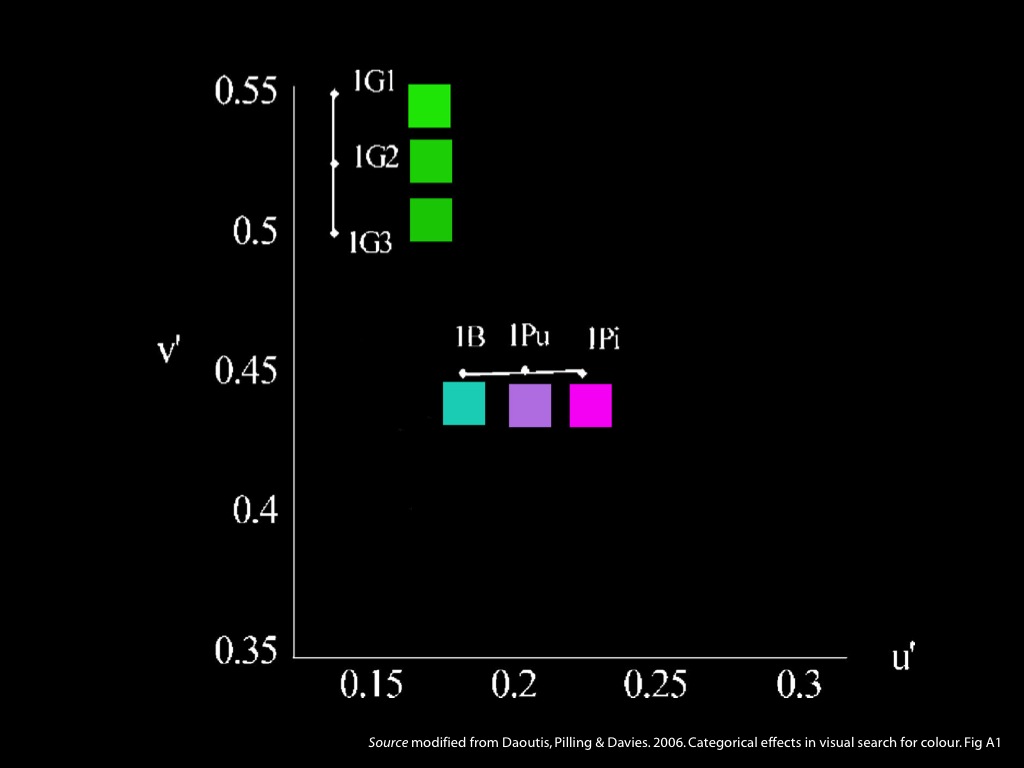
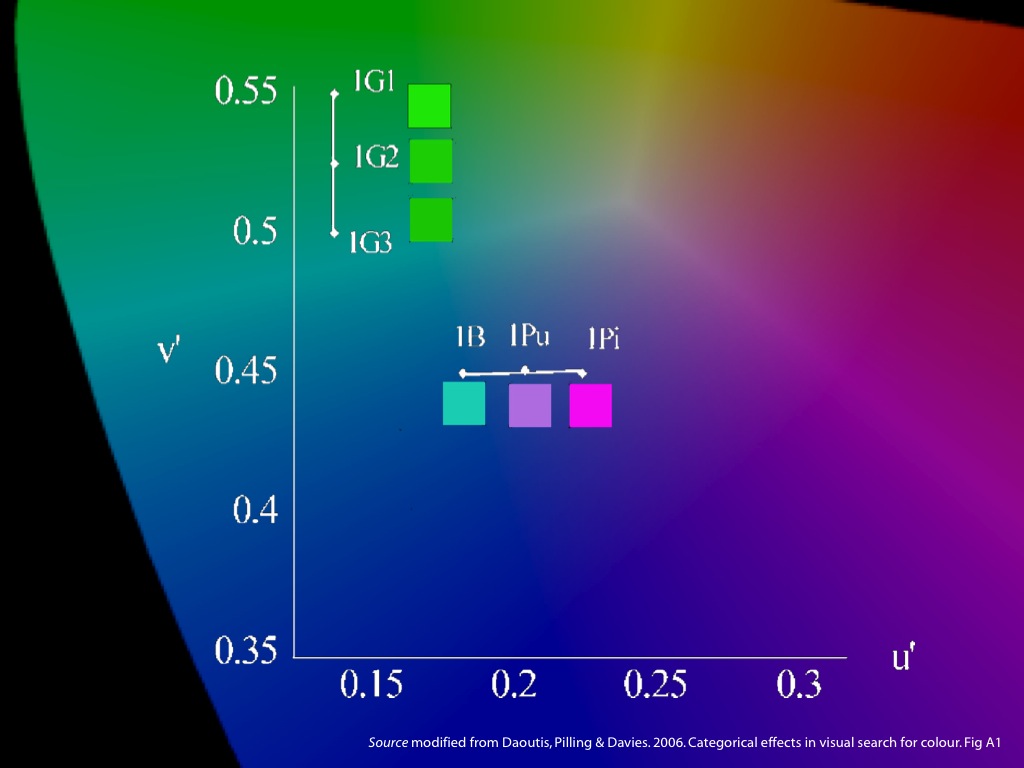

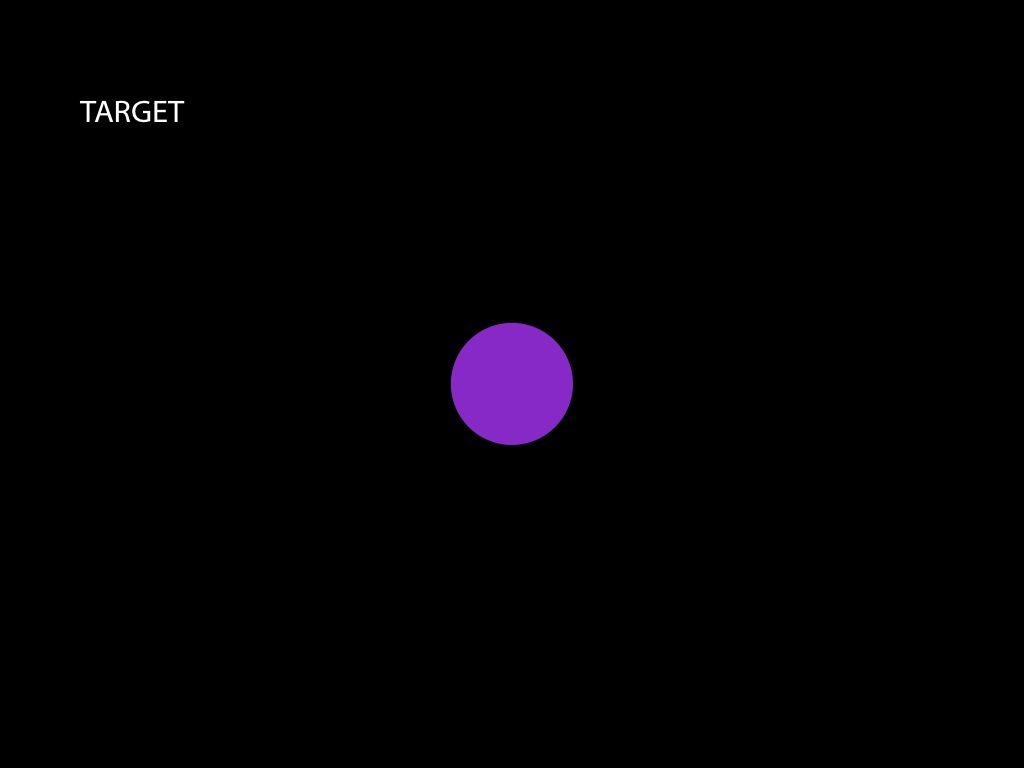
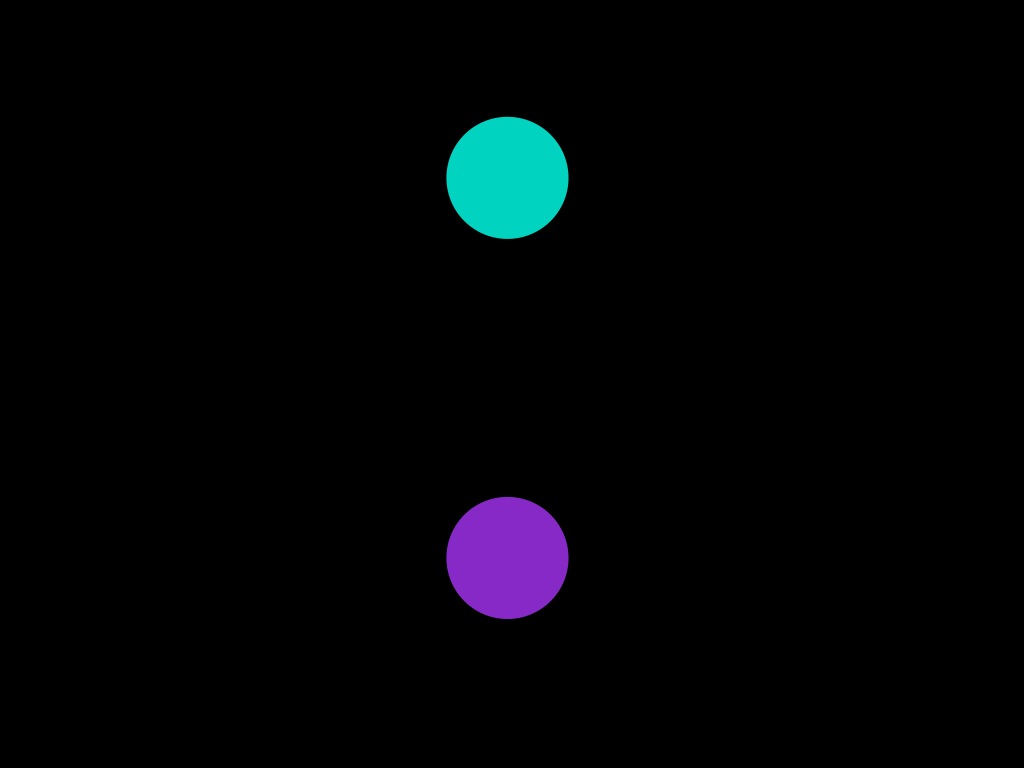
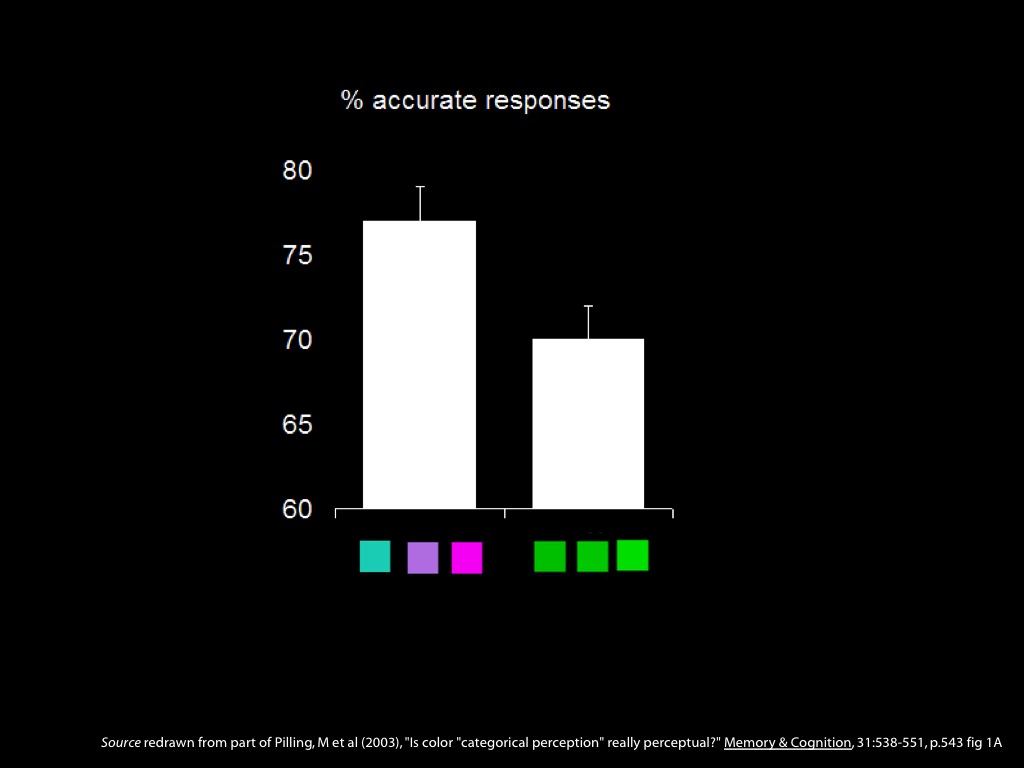

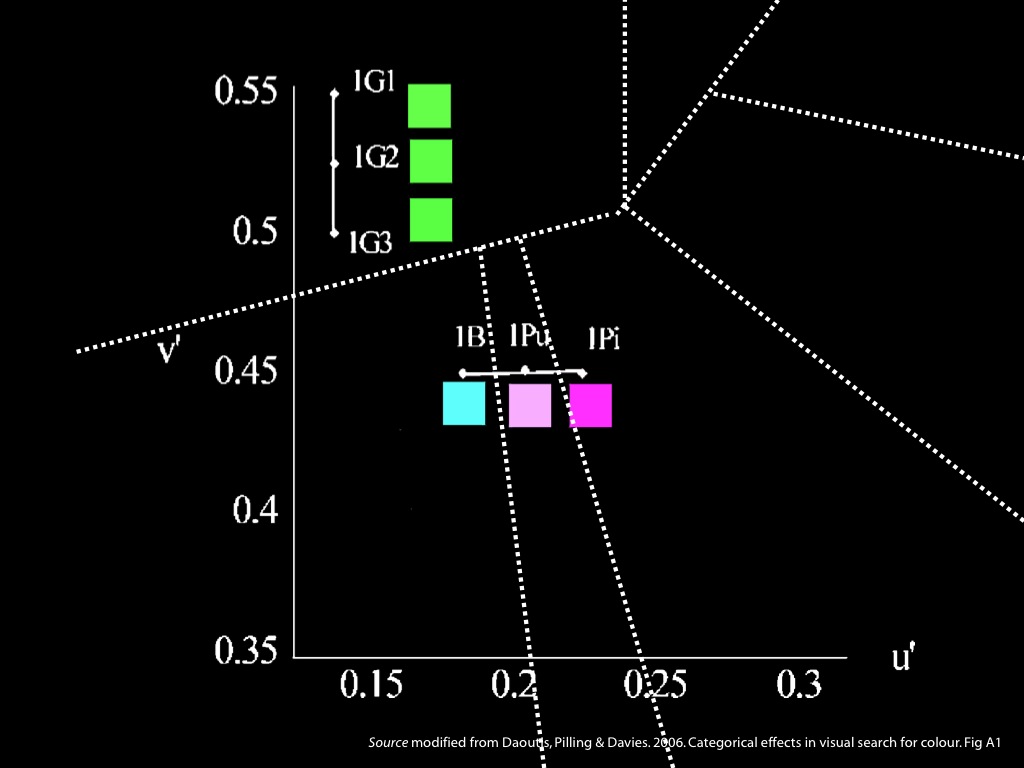
- Reports of phenomenal similarity and difference
- Linguistic labels
- Speed and accuracy of discrimination
There are unexpected patterns in several phenomena including:
- Reports of phenomenal similarity and difference
- Linguistic labels
- Speed and accuracy of discrimination
- Pop-out effects
- Change (odd-ball) detection
A single set of categories enables us to predict all the patterns.
Hypothesis 1: There is a uniform explanation for all the patterns.
Hypothesis 2: The unexpected patterns all occur because a cognitive process categorises stimlui into these categories.
Hypothesis 3: This process is a broadly perceptual process.
visual search task
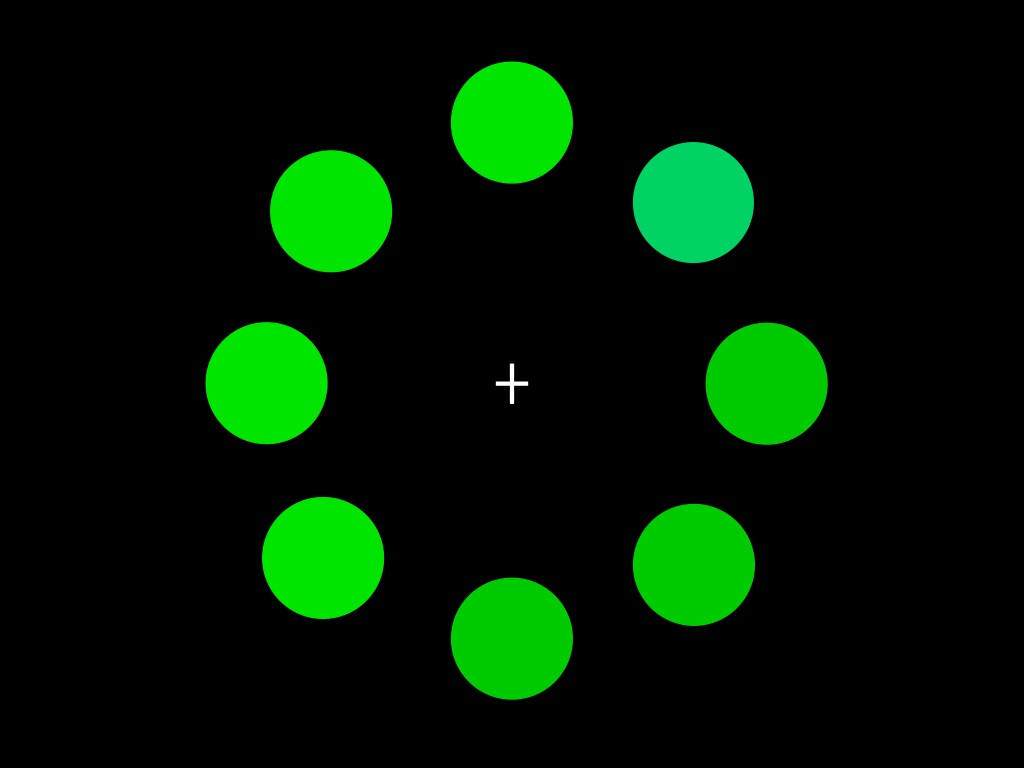

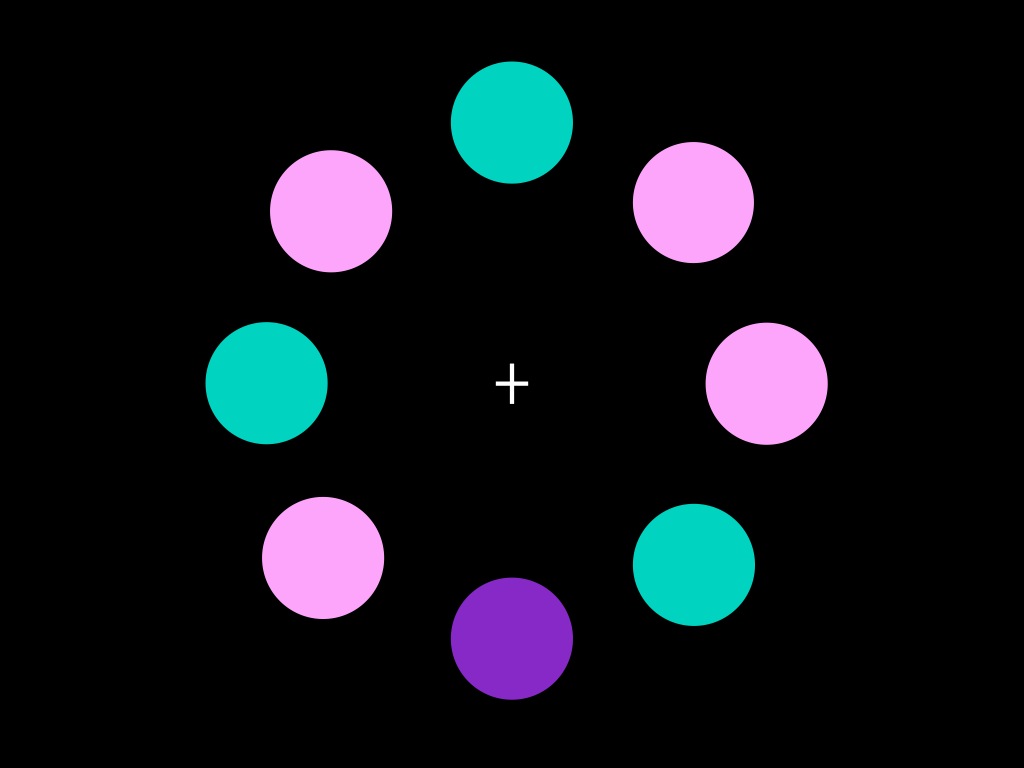
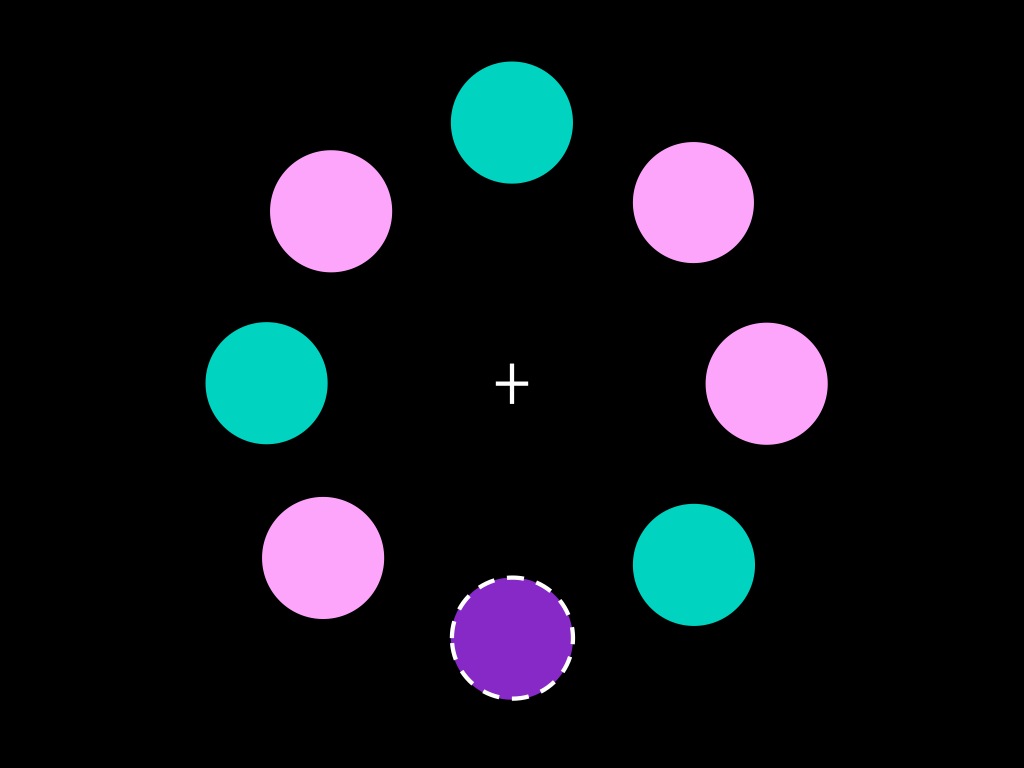

There are unexpected patterns in several phenomena including:
- Reports of phenomenal similarity and difference
- Linguistic labels
- Speed and accuracy of discrimination
- Pop-out effects
- Change (odd-ball) detection
A single set of categories enables us to predict all the patterns.
Hypothesis 1: There is a uniform explanation for all the patterns.
Hypothesis 2: The unexpected patterns all occur because a cognitive process categorises stimlui into these categories.
Hypothesis 3: This process is a broadly perceptual process.
methodological aside
categorical perception vs core knowledge
There are unexpected patterns in several phenomena including:
- Reports of phenomenal similarity and difference
- Linguistic labels
- Speed and accuracy of discrimination
- Pop-out effects
- Change (odd-ball) detection
A single set of categories enables us to predict all the patterns.
Hypothesis 1: There is a uniform explanation for all the patterns.
Hypothesis 2: The unexpected patterns all occur because a cognitive process categorises stimlui into these categories.
Hypothesis 3: This process is a broadly perceptual process.
automatic process : whether it happens is independent of the subject’s task and motivation (to a significant degree)
2.5B
7.5BG
2.5BG
odd ball
odd ball
vMMN (visual mismatch negativity): an event-related potential thought to index pre-attentive change detection in the visual cortex

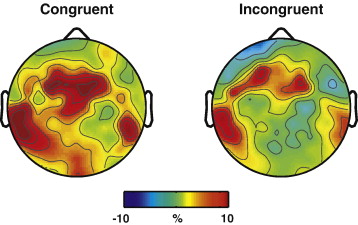
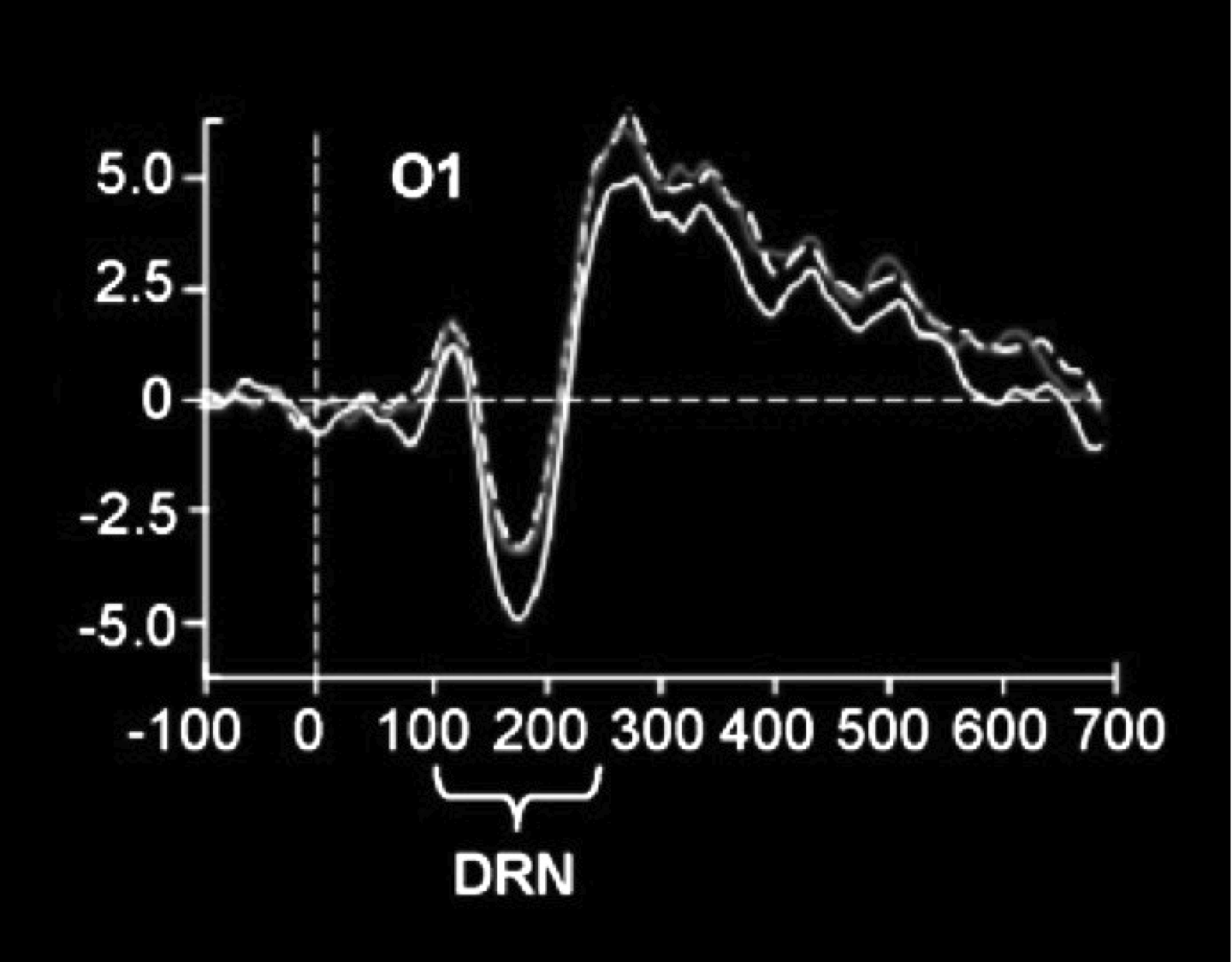
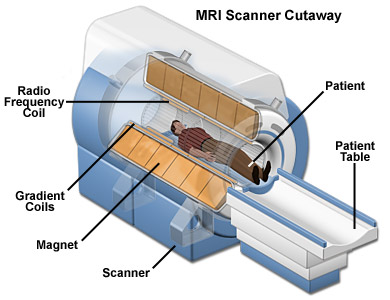
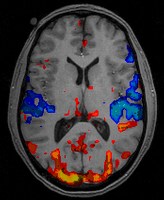
- better spatial resolution
- limited temporal resolution
- subject can't move
vMMN (visual mismatch negativity): an event-related potential thought to index pre-attentive change detection in the visual cortex


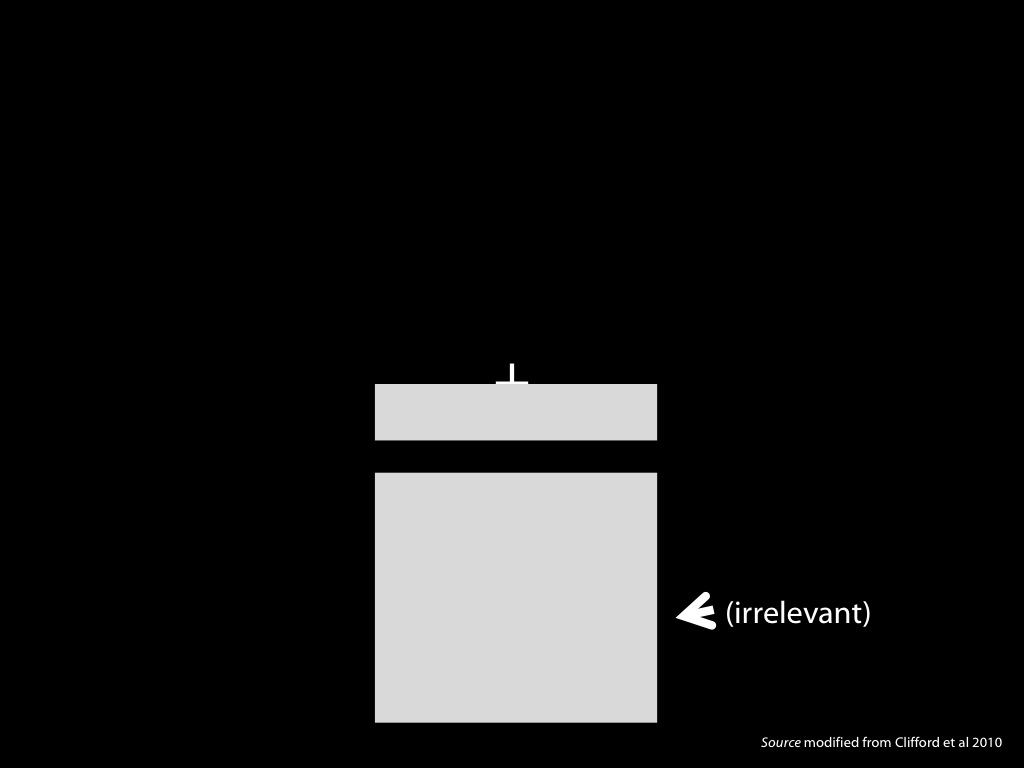
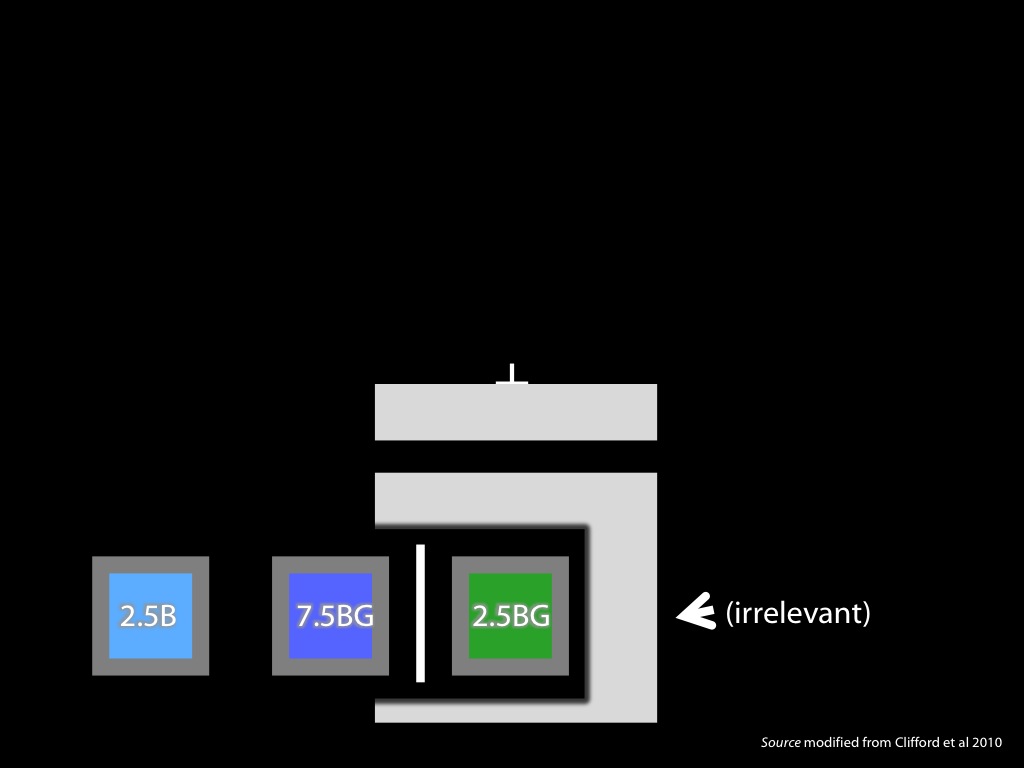
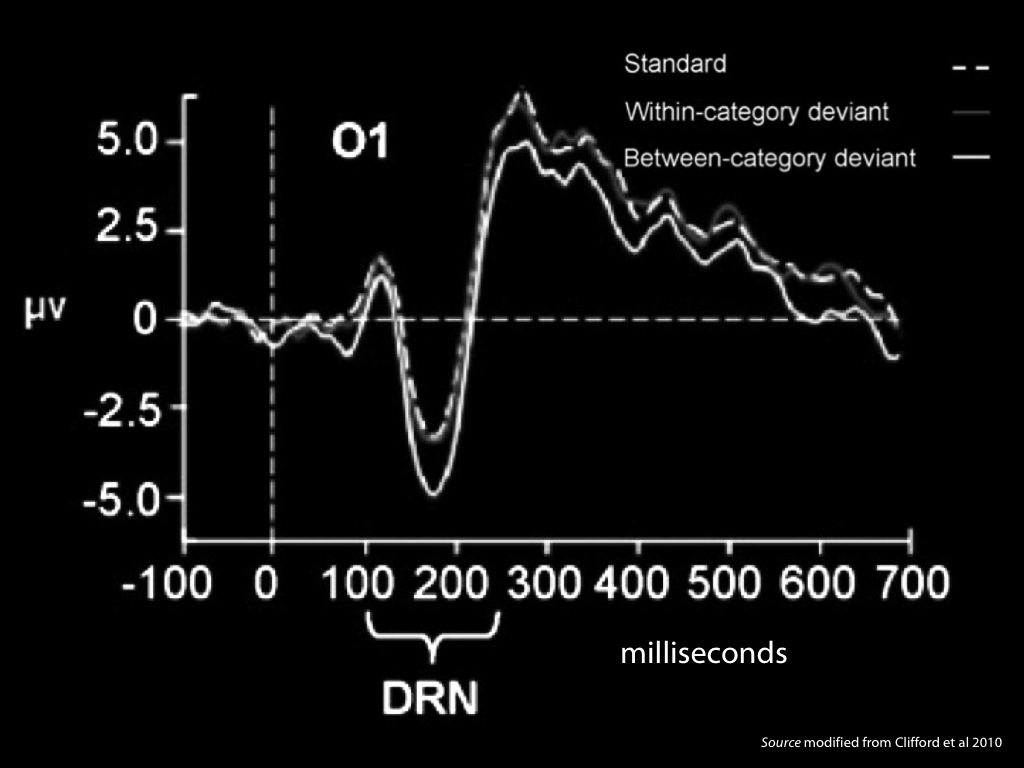
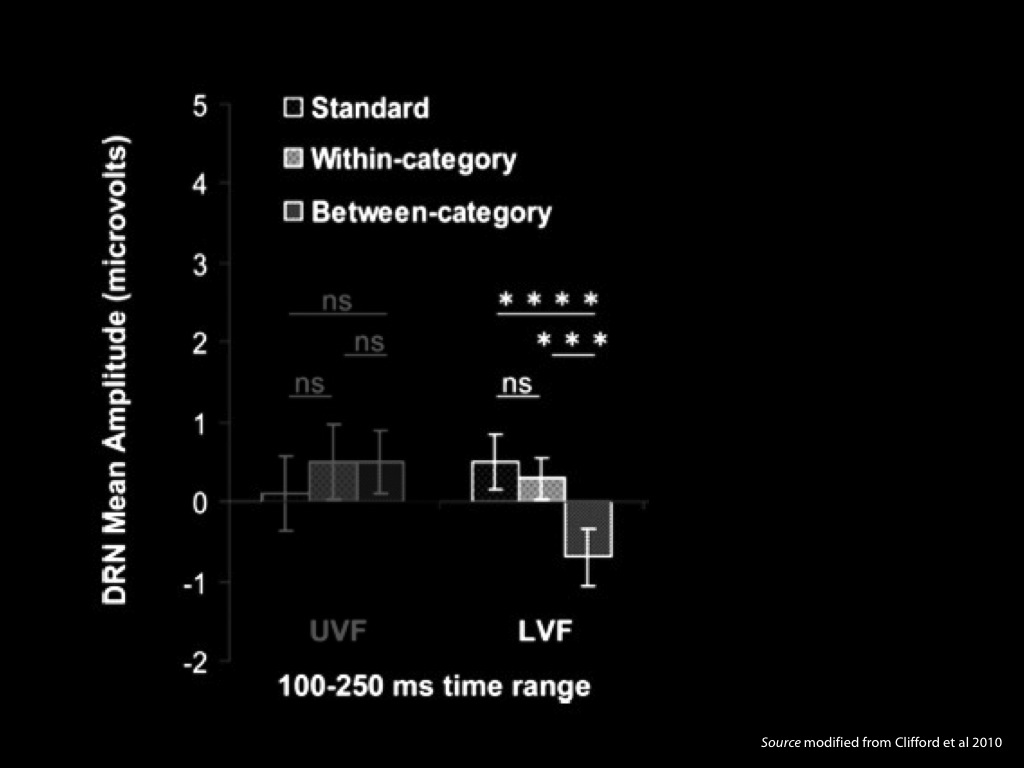
There are unexpected patterns in several phenomena including:
- Reports of phenomenal similarity and difference
- Linguistic labels
- Speed and accuracy of discrimination
- Pop-out effects
- Change (odd-ball) detection
A single set of categories enables us to predict all the patterns.
Hypothesis 1: There is a uniform explanation for all the patterns.
Hypothesis 2: The unexpected patterns all occur because a cognitive process categorises stimlui into these categories.
Hypothesis 3: This process is a broadly perceptual process.
Objection: theoretical confusion
1. In measuring categorical perception, you have to control for perceptual similarity.
2. This is done by using a(n approximation to a) perceptually uniform colour space.
3. A perceptually uniform colour space is one in which distances between shades correspond to discriminability. So equidistant shades are equally discriminable.
Therefore:
4. It is incoherent to suppose that differences in categorical colour properties could affect discimination when controlling for perceptual similarlity.
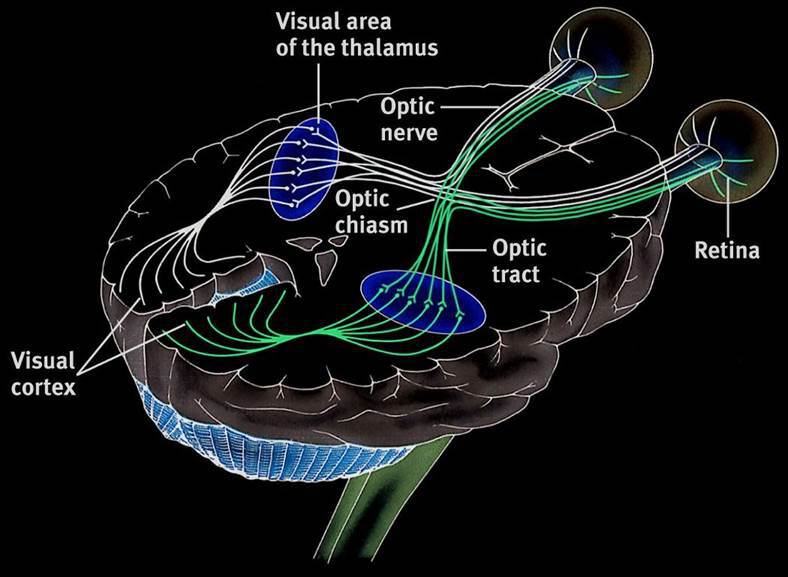

Witzel & Gegenfurtner 2018, figure 5
Objection: theoretical confusion
1. In measuring categorical perception, you have to control for perceptual similarity.
2. This is done by using a(n approximation to a) perceptually uniform colour space.
3. A perceptually uniform colour space is one in which distances between shades correspond to discriminability. So equidistant shades are equally discriminable.
Therefore:
4. It is incoherent to suppose that differences in categorical colour properties could affect discimination when controlling for perceptual similarlity.
So what is categorical perception?
There are unexpected patterns in several phenomena including:
- Reports of phenomenal similarity and difference
- Linguistic labels
- Speed and accuracy of discrimination
- Pop-out effects
- Change (odd-ball) detection
A single set of categories enables us to predict all the patterns.
Hypothesis 1: There is a uniform explanation for all the patterns.
Hypothesis 2: The unexpected patterns all occur because a cognitive process categorises stimlui into these categories.
Hypothesis 3: This process is a broadly perceptual process.